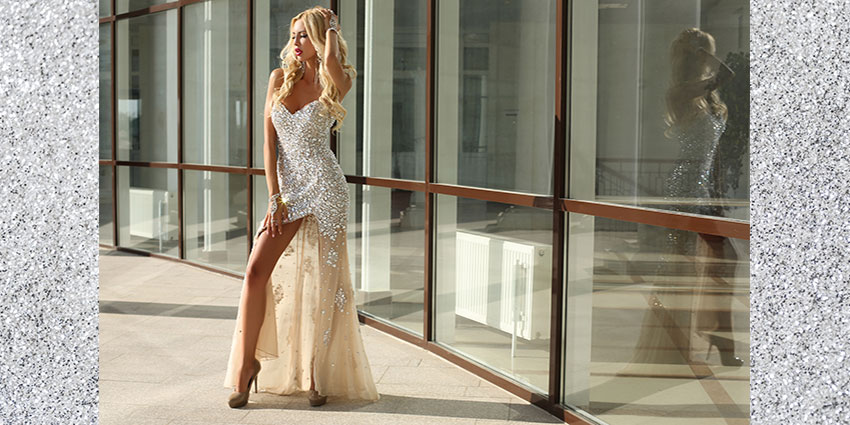It’s natural for humans to love sparkly things. Sequins and glitter remind us of starlight and the radiance of the spiritual worlds we come from. But they’re an environmental menace.

Sequins are used in the fashion industry to adorn garments, bags, shoes and other items. Glitter is used in arts and crafts, on Christmas cards and decorations, and in some types of cosmetics. Neither are essential to human life. They are purely for decoration. But the cost to the environment is huge.
Sexy sequins
Many people don’t realize that sequins are made of plastic, which takes hundreds of years to biodegrade and has hormone-disrupting effects. Worse still, the plastic breaks down into microplastics, which find their way into the air we breathe, the water we drink and the food we eat.
Some scientists have predicted that if manufacturing continues at the same rate as today, by 2050 there will be more plastic by weight than fish in the oceans of the world. No one knows exactly what the health consequences of this will be for us and the other life forms on earth, but we certainly don’t want to wait to find out.
Glamorous glitter
Glitter is primarily made from aluminum-metalized polyethylene terephthalate, which basically means it’s a mixture of aluminium and polyester. Like sequins, it breaks down into microplastics, and it takes a very long time to biodegrade – around a thousand years, according to most estimates.
It’s astonishing that sequins and glitter have not yet been banned. Searching on Amazon UK today, I found 206 pages of glitter and sequin products, all being purchased, I guess, by people who have no idea about the environmental issues associated with them. Or perhaps they do know and simply don’t care.
Eco-friendly alternatives to plastic sequins and glitter
I’m happy to say there are people hard at work creating eco-friendly alternatives.
The best of these so far is the Bio Iridescent Sequin, developed by an Australian designer called Elissa Brunato and made entirely from the cellulose of trees. The sequins are strong enough to be sewn into garments, as shiny as plastic sequins and fully biodegradable.
There is also cosmetic glitter, made mainly from the cellulose of sustainable Eucalyptus trees. The company that makes it, Festival Glitter, says ‘it won’t biodegrade in the pot or bag, only when it’s washed off and gets to meet soil, compost and wastewater where micro-organisms are present’. It’s not entirely clear which micro-organisms are needed, but in the right conditions it says the glitter will take 90 days to fully decompose, which is a heck of a lot better than a thousand years.
Copyright © Clear Space Living Ltd 2022
Related article
How you can help to end the fast fashion fiasco
Like to read more articles like this?
Subscribe to my newsletters to receive news, articles and information about upcoming online courses by email. And I promise you – no junk mail ever.




Have never been a big glitter or sequins buyer, but now will never buy it again!
Wow, thanks for this information. I really had never heard this information before. Thanks for sharing.
Very helpful, thank you … Similar to this are beads in face wash & face scrubs. The fish eat them, then we eat fish full of plastics.
Additionally: garments with sequins, glitter, or other embellishments are more likely to get worn or ruined with frequent wearing and washing. Purchasing high quality items that will last for a long time is the best way to bring sustainability to retail.